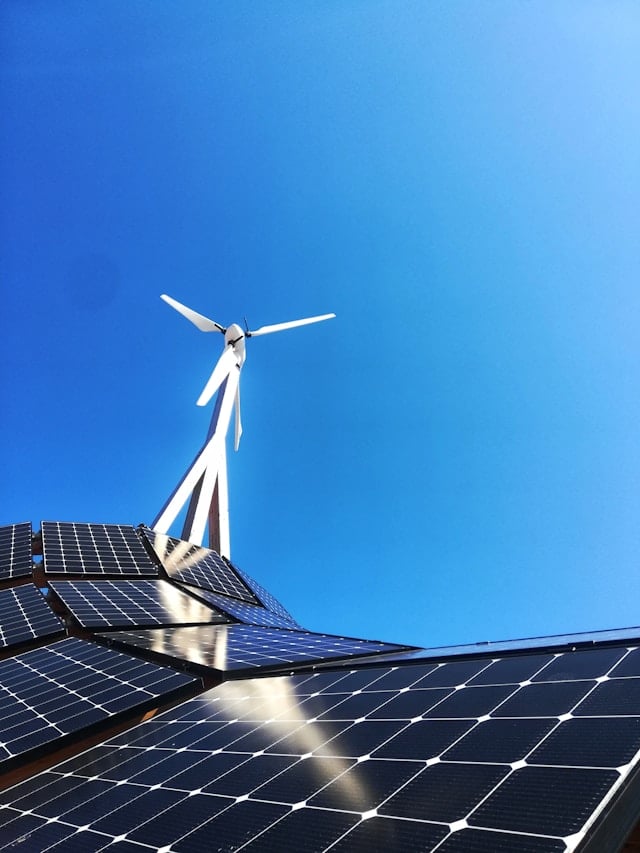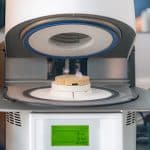Installing solar panels can be a smart way to reduce your energy bills and contribute to a more sustainable future. However, if your home’s roof is facing north, you might be wondering whether or not solar energy is a practical option for you. A common belief is that south-facing roofs capture the most sunlight, and thus, are best for a solar panel system. Although this is often true, it’s not the whole story. In this article, we’ll address your concerns and guide you through the most efficient solar installation options for a north-facing roof in the UK.
Understanding Sunlight and Solar Panels
Before delving into specifics, let’s first understand how solar panels work and why their orientation matters. Solar panels generate electricity from sunlight, more specifically from the sun’s photons. These panels are made up of many small solar cells, each consisting of two layers of silicon.
Cela peut vous intéresser : How to Plan and Execute a DIY Basement to Home Cinema Conversion?
When sunlight hits a solar cell, it causes electrons to move, creating an electric current. This current is then transformed into usable electricity by your home’s electrical system. The more sunlight a solar panel receives, the more electricity it will generate.
Solar panel efficiency refers to how well a panel can convert sunlight into electricity. The sun rises in the east and sets in the west, but its highest point in the sky is due south. This means that south-facing roofs generally receive the most sunlight during the day.
A lire aussi : How Can You Design a Functional and Attractive Boot Room for a Country Home?
But, this doesn’t mean that solar panels on north-facing roofs in the UK are unproductive. If correctly installed and angled, they can still yield a substantial amount of power.
Optimal Angle and Tilt for North-Facing Roofs
The performance of a solar panel installation heavily relies on its tilt and orientation. For north-facing roofs, the panels should ideally be installed at an angle, to capture the most sunlight.
The UK is located in the northern hemisphere, meaning the sun will be to the south throughout the day. For this reason, solar panels on north-facing roofs should ideally be installed at an angle, facing southwards. This will allow them to catch sunlight as the sun moves across the sky from east to west, with its highest point due south.
The optimal tilt for solar panels in the UK is generally around 30-40 degrees. However, this can change depending on your exact location and the time of year. During the winter months, when the sun is lower in the sky, a steeper angle may be more effective.
Efficient Solar Panel Options for North-Facing Roofs
Despite the challenges, some solar panels perform better in less-than-ideal conditions. If your roof faces north, you will want to invest in the most efficient panels possible to maximize your energy production.
Monocrystalline solar panels are the most efficient type on the market, with efficiency rates over 20%. They are made from a single crystal structure, which allows electrons to move more freely, generating more electricity. This type of panel performs well in low-light conditions and can be a good option for north-facing roofs.
A solar panel with a high temperature coefficient could also be beneficial. The temperature coefficient measures how much a panel’s efficiency decreases for every degree above 25°C. A panel with a low temperature coefficient will perform better on hotter days, which can often be the case on north-facing roofs that receive less direct sunlight but can still get hot.
The Role of Solar Trackers
Solar trackers are devices that move your solar panels throughout the day to follow the sun’s path. This can significantly increase the amount of sunlight your panels receive, particularly on north-facing roofs.
There are two main types of solar trackers: single-axis and dual-axis. Single-axis trackers follow the sun’s path from east to west, while dual-axis trackers also adjust to the sun’s changing position in the sky throughout the year.
Using a solar tracker can increase your panels’ efficiency by up to 25%. However, they are more expensive and require more maintenance than fixed panels. Whether a solar tracker is a good option for you will depend on your specific circumstances, such as your budget, how much maintenance you’re willing to do, and the specifics of your roof’s orientation and tilt.
Utilising Solar Energy Storage
Lastly, a great way to maximize the efficiency of a solar power system on a north-facing roof is by storing excess energy. Solar batteries can store electricity generated by your panels during the day for use at night or during periods of low sunlight.
This is particularly beneficial for north-facing roofs, where sunlight may be less consistent. Even if your panels can’t generate enough electricity for your needs at certain points in the day, having a battery allows you to use the power they’ve generated at other times.
Solar batteries have become significantly more affordable and efficient in recent years, making them an increasingly popular addition to solar energy systems. By combining a battery with efficient solar panels and an optimal installation approach, you can make a north-facing roof work for you.
In conclusion, it’s absolutely possible to harness solar energy efficiently with a north-facing roof in the UK. By considering aspects such as panel type, installation angle, usage of solar trackers, and energy storage, you can make the most of your solar power system.
Maximising Solar Power with Additional Features
Aside from choosing the right type of solar panels and installing them at the ideal angle, there are more ways to boost the efficiency of your solar system. This includes integrating solar power controllers and utilising microinverters.
Solar power controllers or charge controllers prevent batteries in a solar system from overcharging by regulating the voltage and current from the solar panels going to the battery. This device ensures the longevity of your solar battery by providing the ideal charging conditions. There are two types of charge controllers – Pulse Width Modulation (PWM) and Maximum Power Point Tracking (MPPT). While PWM is more cost-effective, the MPPT type can offer up to 30% more efficiency.
On the other hand, microinverters convert the direct current (DC) electricity from your solar panels into alternating current (AC) electricity, which is used in your home. Traditional solar systems use a single, central inverter. However, if one panel is shaded or underperforming, it affects the entire system’s performance.
With microinverters, each solar panel has its own dedicated inverter. This means that even if one panel is underperforming, the other panels will not be affected. This feature is particularly beneficial for north-facing roofs in the UK, where the sunlight can be less consistent.
Investing in these additional features might increase the upfront cost of your solar system, but they can significantly boost the overall performance, giving you more value for your money in the long run.
Considerations for North-Facing Solar Installations
Installing solar panels on a north-facing roof can be more challenging compared to south-facing or east-west facing roofs. However, it does not mean it’s impossible or inefficient. By implementing the strategies discussed – from choosing the most efficient type of solar panels, adjusting the installation angle, utilising solar trackers, and integrating additional features such as solar power controllers and microinverters – you can create a productive solar energy system.
In addition, adopting a solar battery storage system will enable you to store excess power during sunny periods and use it when sunlight is scarce. This way, you can maximise your solar panel’s potential and maintain a consistent energy supply.
Lastly, you should consider the maintenance of your solar system. While solar panels require minimal maintenance, occasional cleaning and regular checks are necessary to keep them working at optimum efficiency. Remember that any obstructions, such as leaves or dirt, may reduce the amount of sunlight your panels receive.
Conclusion
In conclusion, a north-facing roof in the UK is not a barrier to harnessing solar energy. By selecting high-efficiency solar panels, optimising the installation angle and tilt, considering the use of solar trackers, and integrating additional features, you can make the most out of your solar system and significantly reduce your energy bills. It’s all about adapting your approach to the specifics of your situation and making smart, informed choices. With the advances in solar technology, you can achieve a sustainable, efficient energy system, regardless of the direction your roof is facing.
















